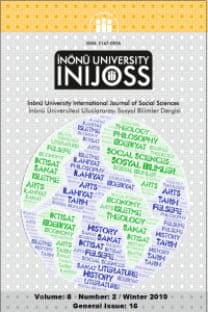CLEAR LIGHT OF THE DAY: FRAGMENTED POSTCOLONIAL LIVES
The
striking changes in the outer realities of India and their effects on the
Indian people after the colonization period are the direct sources of the
fragmented Indian identities. As a reflection, Indo-Anglican writers try to
describe the tension and anxiety of being modern in a traditional society by
paying their attention to gradual transformation of the societal changes. Being
an Indian is important for the Indo-Anglican writers so that they attempt to
depict Indian traditions, customs, way of living and culture by blending their
seemingly western perspectives. In this way, because they represent both tradition
and modernity, they become important for the literary domain in India and in
England.
As an
Indo-Anglican writer, the difference of Anita Desai is her achievement to
depict the psychology of her characters by focusing on their inner world in
spite of the societal handicaps (Indian society is made up of groups rather
than focusing on individual members) and the transformation of the society
(past-present; traditional-modern). Indo-Anglican female authors have the
conflict of being inter-cultural as a result of having western education. They
tend to solve this crisis by looking back to their own past and through
nostalgia, they try to regain their authentic identity. Likewise, Anita Desai
in her novel Clear Light of the Day
depicts individuals who are in search for their identity and Desai focuses
especially on the painful voyage of the female character to find her identity
by digging out her past. This article aims at analyzing Anita Desai’s novel Clear Light of the Day in relation to
the fragmented identities resulted from both the colonial and postcolonial
effects over the individuals.
Anahtar Kelimeler:
Indo-Anglican writers, fragmentation, postcolonialism, Anita Desai, intercultural
CLEAR LIGHT OF THE DAY: FRAGMENTED POSTCOLONIAL LIVES
The
striking changes in the outer realities of India and their effects on the
Indian people after the colonization period are the direct sources of the
fragmented Indian identities. As a reflection, Indo-Anglican writers try to
describe the tension and anxiety of being modern in a traditional society by
paying their attention to gradual transformation of the societal changes. Being
an Indian is important for the Indo-Anglican writers so that they attempt to
depict Indian traditions, customs, way of living and culture by blending their
seemingly western perspectives. In this way, because they represent both
tradition and modernity, they become important for the literary domain in India
and in England.
As an
Indo-Anglican writer, the difference of Anita Desai is her achievement to
depict the psychology of her characters by focusing on their inner world in
spite of the societal handicaps (Indian society is made up of groups rather
than focusing on individual members) and the transformation of the society (past-present;
traditional-modern). Indo-Anglican female authors have the conflict of being
inter-cultural as a result of having western education. They tend to solve this
crisis by looking back to their own past and through nostalgia, they try to
regain their authentic identity. Likewise, Anita Desai in her novel Clear Light of the Day depicts
individuals who are in search for their identity and Desai focuses especially
on the painful voyage of the female character to find her identity by digging
out her past. This article aims at analyzing Anita Desai’s novel Clear Light of the Day in relation to
the fragmented identities resulted from both the colonial and postcolonial
effects over the individuals.
Keywords:
Indo-Anglican writers, fragmentation, postcolonialism, Anita Desai, intercultural,
___
Bliss, C.D. “Against the Current: A Conversation with Anita Desai”.The Massachusetts Review.29: 3 (1988): 521-537. Web.Desai, Anita. Clear Light of Day. New York: Penguin Books, 1980. Print.
---, Caryl Philips and Ilan Stavans. “The Other Voice”. Transition. 64 (1994), 77-89. Web. <http://www.jstor.org/stable/2935309> Gupta, Akhil and Jaes Ferguson. “Beyond ‘Culture’: Space, Identity, and the Politics of Difference”. Cultural Anthropology. 7:1 (1992): 6-23. Web.
Hall, Stuart and Paul de Gay. Questions of Cultural Identity. London: Sage Publications, 1996. Web.
E.J. Hobsbawm. The Age of Empire: 1875-1914. London: Abacus, 1989. Print.
Jena, Seema. Voice and Vision of Anita Desai. New Delhi: Ashish Publishing House, 1989. Print.
- ISSN: 2147-0936
- Yayın Aralığı: Yılda 2 Sayı
- Yayıncı: İnönü Üniversitesi
Sayıdaki Diğer Makaleler
URBAN SYSTEM AND DEVELOPMENT IN CONTEMPORARY IRAN
BİRLİKTE YAŞAMANIN İMKÂNI OLARAK DEMOKRASİ
BÖLGESEL KALKINMADA ÜNİVERSİTELERİN SOSYAL VE KÜLTÜREL ROLÜ
AFGAN SAVAŞI VE SOVYET ORTA ASYASI
KAMUDA SEKTÖRÜNDE YOLSUZLUK RİSKİNİ ÖNLEYİCİ BİR ARAÇ OLARAK İÇ KONTROL SİSTEMİ
MALATYA TÜMÜLÜSLERİ HAKKINDA BİR DEĞERLENDİRME
BİREY-ÖRGÜT UYUMU KAVRAMI ÜZERİNE KAVRAMSAL BİR İNCELEME
ABD BAŞKANI DONALD TRUMP’IN POLİTİKALARININ STA’LARA VE GİRİŞİMCİLİK NİTELİKLERİNE ETKİLERİ
Nesrin DEMİR, M.nezif ÖZMUTAF, Bülent ERGANİ
DEFENSIVE JIHAD: ISLAMIZATION OF THE TURKS AND TURKIFICATION OF ISLAM
